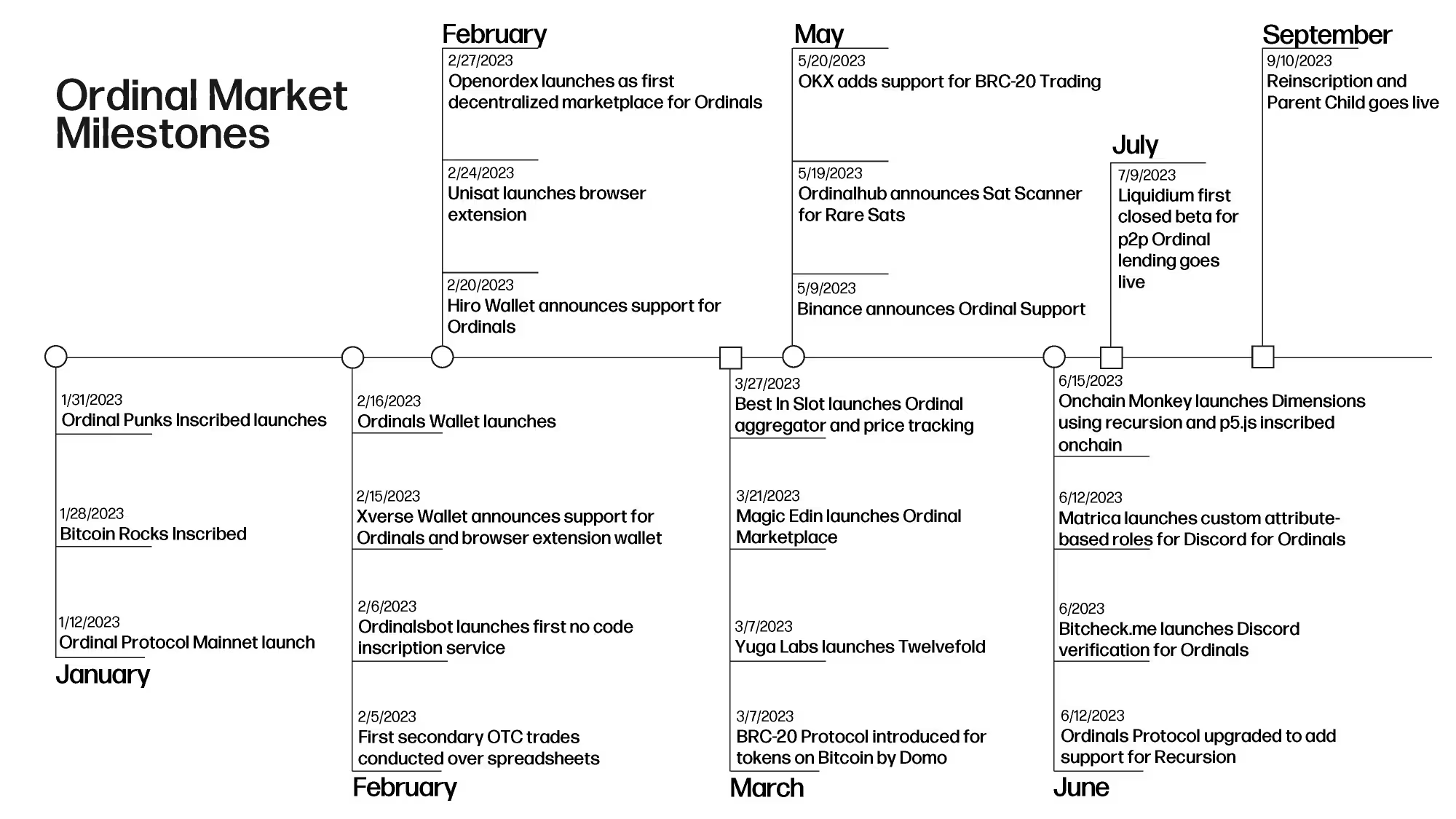The Ordinals saga unfolds like a digital odyssey. At the heart of this tale lies the Ordinals protocol, an audacious brainchild of software engineer Casey Rodarmor. It's a story of revolution, of inscribing arbitrary data onto satoshis, the Bitcoin network's smallest units, turning them into something more than mere currency: digital canvases of infinite possibility.
This process of inscription, weaving data into the fabric of a Bitcoin transaction, is akin to embedding a soul into the body of a satoshi. The data, ranging from the mundane to the sublime, from simple text to complex HTML, becomes a permanent fixture once the transaction is mined. Secure, immutable, decentralized—these inscribed satoshis carry their unique identities forever, distinct in the vast ocean of Bitcoin's digital expanse.

But the Ordinals saga is not just about art; it's a testament to the evolution of Bitcoin's utility and economics. Ethereum, the grand bazaar of NFTs, relies on off-chain data storage for practicality and cost-efficiency. In stark contrast, Ordinals etch every bit of their essence on-chain, directly onto Bitcoin, offering an unrivaled permanence-to-cost ratio. This is not just about storing data; it's a redefinition of what it means to own a piece of the digital world.
Enter BRC-20s, the new frontier of tokenomics atop the Ordinals platform. These tokens, unlike their Ethereum counterparts, are not just smart contracts but snippets of JSON text inscribed into the Bitcoin blockchain. They symbolize a paradigm shift in the fungibility of tokens, a blend of the unique and the divisible, a dance of individuality within the collective.
The narrative of Ordinals takes a dramatic turn with the emergence of Rare Sats. Here, we witness the birth of a new rarity index, the Rodarmor Rarity Index, turning ordinary satoshis into treasures of varying uniqueness and historical significance. From the mythical genesis block satoshi to the whimsical palindrome sats, each category tells a story, a memory etched into Bitcoin's vast ledger.

As the Ordinals ecosystem burgeons, wallets like Xverse, Leather, and OKX emerge as the custodians of these new treasures, gateways to a world where satoshis are more than just currency. Marketplaces like Magic Eden become the agora for these digital artifacts, where collectors and creators converge.

Yet, as with all tales of revolution, Ordinals have faced their adversaries. The "old guard" of Bitcoin purists views this evolution with suspicion, a detour from Bitcoin's destined path as a pure payment system. But amidst this ideological clash, a new vision emerges, one where Bitcoin's utility transcends its original design, offering a canvas for creativity, a new model for miner revenue in a post-subsidy world.
The Ordinals narrative is not without its challenges. The surge in Bitcoin NFT minting, the rising popularity of BRC-20 tokens, and the thrill of "Sat Hunting" have brought to light concerns over network congestion and scalability. These are not mere technical hurdles; they are chapters in the ongoing story of Bitcoin's evolution.

It's a story still being written, a journey still being charted, a testament to the ever-evolving narrative of Bitcoin and the wider cryptoeconomy. Ordinals a unique value proposition based on the specific satoshi they are inscribed on, adding a new dimension of rarity especially influenced by significant Bitcoin events like halvings. The emergence of Ordinals brings potential long-term benefits to the Bitcoin network, notably through transaction fees. With Bitcoin's subsidy decreasing over time, the network's sustainability may increasingly rely on transaction fees from activities like trading Ordinals. This could enhance the economic model of Bitcoin, although concerns about network congestion and scalability persist.



Satoshis, the elemental particles of Bitcoin, each one a speck of digital gold waiting to be transformed into something extraordinary. Ordinal numbers serve as the magic wand in this process, bestowing a unique identity upon each satoshi. Like the numbered strokes in a pointillist painting, these ordinal numbers are meticulously assigned based on the chronological order in which each satoshi was mined, crafting a narrative of time and creation.

